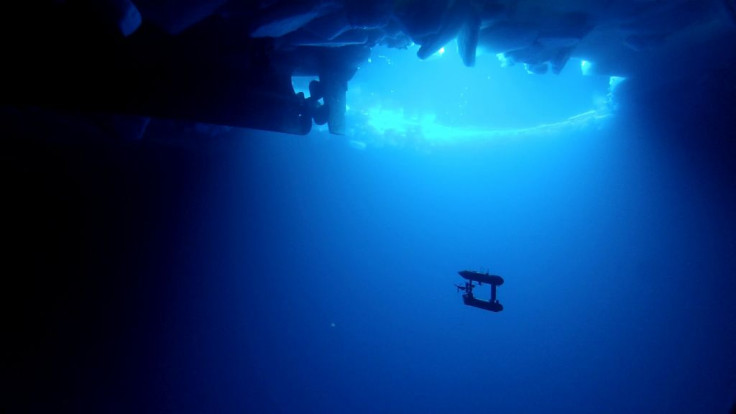SeaBED Underwater Robot Detects Antarctic Ice Thickness For First Time

An international group of scientists has succeeded in accurately measuring the thickness of Antarctic sea ice for the first time ever, which could greatly help researchers determine how quickly polar ice caps are melting due to climate change.
In the past, polar ice researchers had no way of knowing exactly how quickly the ice was melting as they had no idea how deep the ice went.
However, by developing Autonomous Underwater Vehicle (AUV) or SeaBED, a state-of-the-art 2m-long underwater robot able to swim below the ice caps, they have been able to create the first detailed, high-resolution 3D maps of Antarctic sea ice.
The difficulty in measuring Antarctic ice
Since the 1950s, researchers have been relying on data produced by nuclear submarines that patrol the Arctic oceans to the north, which show the ice has been reducing at a rate of 40%.
However, to the south, the Antarctic treaty bans the use of these submarines, so the traditional methods for gathering data on melting ice caps includes manually drilling holes into the ice and having to try and sail ships as close as possible to the location to take measurements, or even relying on satellite imagery.
In contrast, the SeaBED robot can swim below Antarctic ice slabs at a depth of 20-30m with an upward-looking sonar system in order to map and measure the undersides of the sea ice floes.
"People have been using ice breakers but they target the thinnest parts of the sea ice, which means they don't get an accurate picture of the ice. Now we can use these 3D images to look at how ridges are forming and how thick the ice in large sections," Dr Jeremy Wilkinson from British Antarctic Survey (BAS), who co-authored the study, told Cambridge News.
"We can then use satellites to form an accurate picture of the whole continent, which means we can now assess how climate change is affecting the south.
Thicker areas of ice will give a realistic picture of climate change
The study, published in the latest issue of the journal Nature Geoscience, reveals the robot was also able to measure ice up to 17m thick, which shows there could be areas of thick ice that are unaccounted for, but the scientists are not yet sure what this means.
"It is difficult to say whether these findings are positive or negative yet as we have nothing to compare them to but this is the start of the journey," Wilkinson said.
"What this effort does is show that observations from AUVs under the ice are possible and there is a very rich data set that you can get from them," Ted Maksym, a scientist at the Woods Hole Oceanographic Institution (WHOI) whose lab designed, built and operated the AUV.
"This work is an important step toward making the kinds of routine measurements we need in order to really monitor and understand what's happening with the ice and the large scale changes that are occurring."
© Copyright IBTimes 2025. All rights reserved.






















